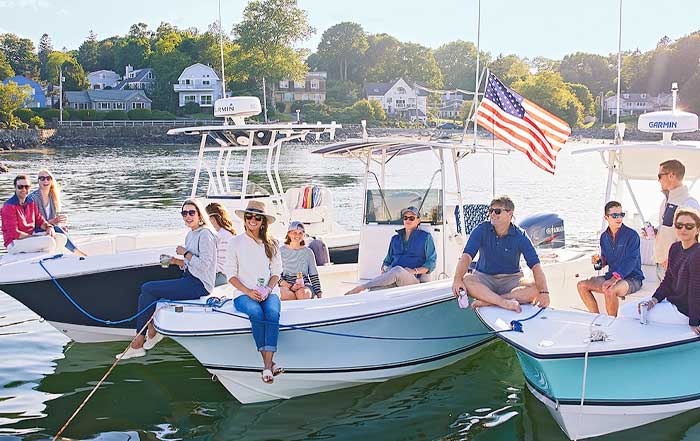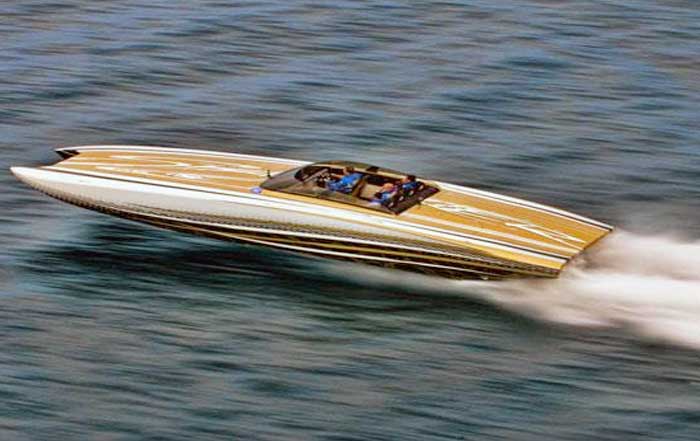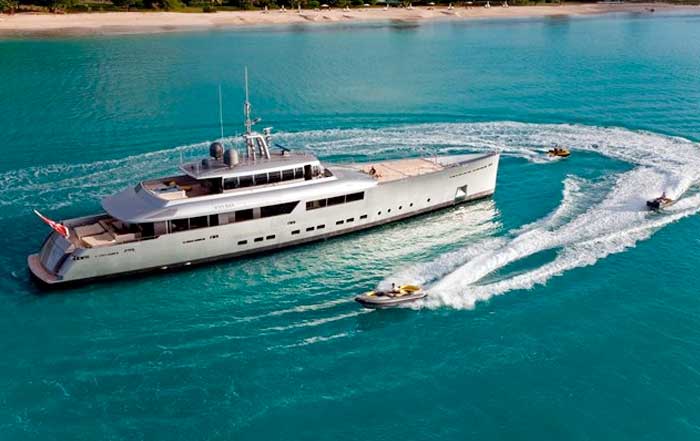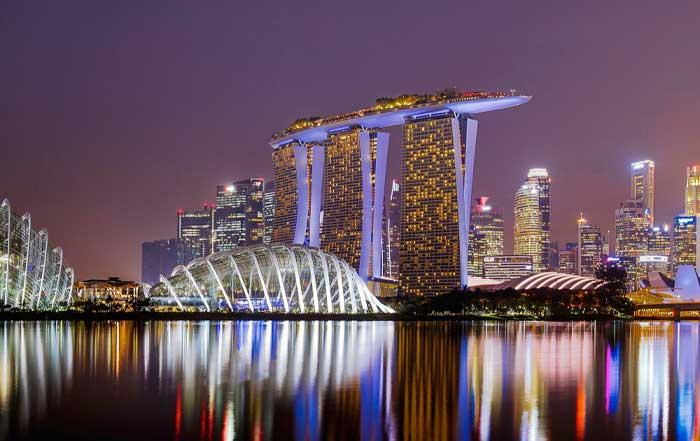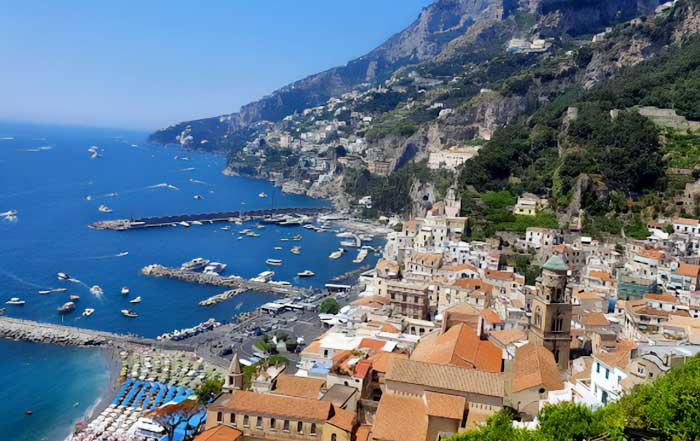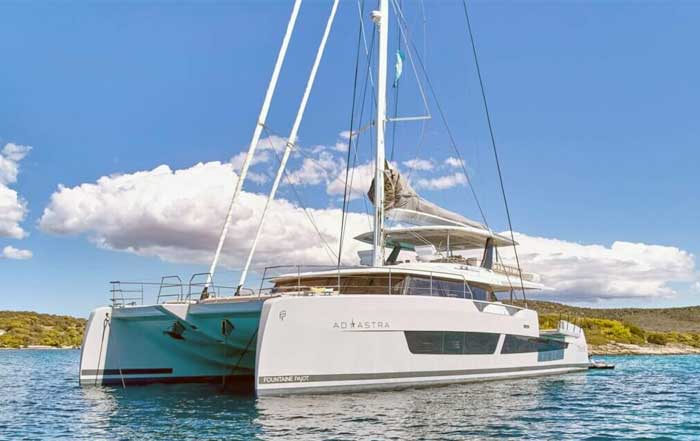In an age when luxury travel often centers on sleek Mediterranean marinas or the turquoise waters of the South Pacific, the vast Canadian wilderness offers a contrasting yet equally mesmerizing experience. Cruising through Canada’s fjords, inland lakes, and unspoiled coastal waterways has emerged as a refined pursuit for those seeking solitude, authenticity, and a deeper connection with nature. The country’s immense geography, stretching from the rugged Pacific Northwest to the tranquil shores of the Atlantic, provides a rare blend of seclusion and adventure that modern yachting enthusiasts increasingly desire.
From the snow-capped peaks that cradle British Columbia’s fjords to the serene freshwater labyrinths of Ontario and Quebec, Canada’s waterways remain some of the least explored by private yacht owners. As climate patterns shift and Arctic seasons grow longer, yachting in Canada is entering a renaissance—where cutting-edge expedition vessels meet the country’s age-old natural splendor. The experience is as much about exploration as it is about self-reflection, where travelers chart a course not only through dramatic landscapes but also through the cultural and ecological narratives that define the Canadian identity.
To appreciate this distinctive frontier of cruising, one must understand both its history and its transformation. The evolution of Canadian maritime travel mirrors the evolution of yachting itself—a gradual blend of craftsmanship, technology, and respect for nature’s unpredictability. On Yacht-Review.com, where the nuances of cruising, design, and boats are explored with expert depth, Canada’s remote fjords and lakes represent a perfect intersection between elegance and endurance.
British Columbia’s Fjords: Where the Mountains Meet the Sea
The fjords of British Columbia stand among the most dramatic cruising grounds in North America. Carved by glacial movement over millennia, these deep inlets—such as Princess Louisa Inlet, Bute Inlet, and Knight Inlet—offer mirror-still waters surrounded by towering granite walls draped in evergreen forests. Cruising here evokes a sense of timelessness; each inlet feels like a living cathedral of mist and silence.
Yachts venturing into these waters often begin their journey in Vancouver, a city where urban sophistication seamlessly transitions into wilderness. From there, the journey northward along the Sunshine Coast or Inside Passage unfolds like a cinematic experience. As one passes Desolation Sound, the calm waters and warm microclimate reveal one of the most beloved anchorages in the region. It is here that many sailors experience the quintessential Canadian paradox—rugged isolation paired with understated luxury.
For those seeking ultimate seclusion, Princess Louisa Inlet remains an icon. Accessible only by sea or air, this narrow fjord culminates in the thundering Chatterbox Falls, a natural spectacle that has lured explorers and poets alike. The inlet’s preservation owes much to James F. “Mac” MacDonald, an early conservationist who gifted the surrounding land to the province to protect it from development. This spirit of stewardship resonates with today’s eco-conscious yacht owners, many of whom prioritize sustainable cruising practices and low-impact technologies.
Vessels like the Nordhavn 80 Expedition Yacht or hybrid-powered models from Silent Yachts exemplify this new era of environmentally considerate exploration. Hybrid propulsion, advanced hull designs, and renewable energy systems have redefined what it means to voyage responsibly. Readers exploring the intersection of innovation and sustainability can find more insights in the technology and sustainability sections of Yacht-Review.com.
Beyond the mechanics of navigation lies the intangible reward of immersion. The fjords teem with life—bald eagles circling overhead, pods of orcas gliding through emerald depths, and the occasional black bear visible along the shoreline. As dusk falls, the waters glow faintly with bioluminescence, turning each anchorage into an otherworldly sanctuary.
The Inside Passage: A Maritime Corridor Through Time
Few routes capture the imagination of mariners quite like the Inside Passage, a 1,500-kilometer stretch of protected waterways running from Washington State through British Columbia to Alaska. This legendary corridor, once traversed by indigenous coastal peoples and later by fur traders, is now a bucket-list passage for adventurous yacht owners and luxury charters alike.
The Inside Passage combines logistical ease with dramatic variety. Protected from the open Pacific by a maze of islands, it offers sheltered navigation even for less experienced crews. Yet despite its accessibility, it retains a profound sense of wilderness. Settlements such as Bella Bella, Prince Rupert, and the Haida Gwaii archipelago punctuate the route, each offering glimpses into Canada’s maritime heritage. The Haida Nation, known for its rich artistic traditions and monumental totem poles, has inspired a global appreciation for indigenous craftsmanship and conservation ethics.
Modern luxury yachts, equipped with stabilizing systems, sonar imaging, and AI-assisted navigation, allow owners to explore this route in comfort unimaginable a few decades ago. Yet technology does not diminish the raw power of the environment. Dense fogs, shifting tides, and narrow channels demand skill and respect—qualities deeply ingrained in the culture of Canadian seamanship.
Organizations like Ocean Wise and Parks Canada have taken active roles in preserving these waters, implementing marine protected areas and guidelines to reduce underwater noise pollution affecting whales and dolphins. Sustainable cruising here is not just a preference—it is a responsibility. As the global yachting community gravitates toward ethical practices, Canada’s west coast has become a proving ground for innovation in marine conservation.
To explore more on the convergence of tradition and innovation in yachting, readers can visit Yacht-Review’s sections on history and business, where such themes are frequently analyzed in depth.
Canadian Wilderness Cruising Explorer
Discover Canada's Premier Yachting Destinations
Why Cruise Canadian Waters?
Canada offers30,000+ islandsin Georgian Bay alone and hosts20% of Earth's surface freshwateracross the Great Lakes. From Pacific fjords to Arctic passages, these waters combine wilderness isolation with sustainable luxury.
Select a Region to Explore
Recommended Vessel Types
Nordhavn 80, La Datcha, Planet Nine - Ideal for Arctic and remote fjord exploration with reinforced hulls and extended range.
Silent Yachts, Greenline - Eco-conscious cruising with solar panels and renewable energy for sustainable wilderness travel.
Beneteau, Azimut, Riviera - Sleeker hulls and shallow drafts optimized for Great Lakes and inland waterways.
Axopar, Nimbus - Versatile models for inland lakes requiring transport flexibility and self-sufficiency.
Essential Planning Considerations
Most regions: June-September | Arctic: July-August only
Advanced systems recommended: Sonar imaging, AI-assisted navigation, real-time satellite weather, dynamic positioning (Arctic)
Marine protected areas, Ocean Wise certification, low-impact anchoring, waste management protocols, reduced underwater noise
Collaborate with First Nations and Inuit guides, support indigenous-led cultural centers, respect traditional waters
Limited in remote areas - plan for self-sufficiency. Expanding eco-marinas in Tofino, Prince Rupert, Thunder Bay
Fresh Pacific salmon, Atlantic lobster, wild blueberries - support Ocean Wise Seafood certified suppliers
Great Lakes Grandeur: The Heartland of Freshwater Cruising
While British Columbia may dominate the image of wilderness cruising, Canada’s Great Lakes—spanning Ontario, Quebec, and touching several U.S. states—form one of the largest networks of navigable freshwater in the world. Collectively, Lakes Superior, Huron, Michigan, Erie, and Ontario hold 20% of the planet’s surface freshwater, an extraordinary stage for inland yachting that blends natural wonder with cultural sophistication.
Yachting on the Great Lakes offers a different rhythm than ocean cruising. Ports like Toronto, Kingston, and Sault Ste. Marie present refined urban experiences, while remote anchorages in Georgian Bay and Lake Superior’s north shore embody tranquility. The islands of Georgian Bay—some 30,000 in total—are a marvel of pink granite and windswept pines immortalized in the paintings of Canada’s Group of Seven artists. Many modern yacht owners retrace these landscapes as a living art form, seeking the same interplay of light and solitude that inspired generations of painters and poets.
One cannot overlook the engineering marvel of the Welland Canal, connecting Lake Erie and Lake Ontario, which allows even large yachts and expedition vessels to transit inland routes toward the St. Lawrence Seaway. This interconnected system enables voyages from the Atlantic Ocean all the way to the interior of North America, merging practicality with exploration.
The inland lakes are also witnessing a quiet revolution in yacht design. Builders such as Beneteau, Azimut, and Greenline Yachts have introduced models tailored to freshwater cruising—sleeker hulls, shallow drafts, and energy-efficient systems that align with the region’s environmental values. These innovations are frequently featured in Yacht-Review’s reviews section, offering prospective owners technical insights into performance, comfort, and sustainability.
Cruising the Great Lakes also unveils a sense of community rare in maritime culture. Yacht clubs such as the Royal Canadian Yacht Club in Toronto and the Port Credit Yacht Club foster traditions that date back to the 19th century. Summer regattas, shoreline festivals, and heritage tours along the Rideau Canal combine luxury with history, making the Great Lakes a living museum of nautical culture.
Northern Lakes and Inland Serenity: Canada’s Hidden Freshwater Jewels
Beyond the grandeur of the Great Lakes, Canada’s inland waterways hold a quieter form of beauty. The provinces of Manitoba, Saskatchewan, and Alberta—often overlooked in yachting narratives—harbor thousands of glacial lakes that stretch to the horizon. Lake Winnipeg, Reindeer Lake, and Lac La Ronge offer unspoiled cruising opportunities, often reserved for those with the patience to navigate remote terrain. These inland destinations represent a return to the essence of exploration, where the hum of an engine or the ripple of a paddle may be the only sounds interrupting the stillness.
Lake Winnipeg, for example, is a vast inland sea stretching over 24,000 square kilometers. Its sheer scale allows for days of uninterrupted navigation, while its secluded bays and sandy islands invite the type of serene anchorage that ocean-bound yachts rarely experience. For captains seeking adventure, Reindeer Lake, straddling the border between Saskatchewan and Manitoba, provides access to hundreds of small islands and narrow channels where the natural world feels entirely untouched by modern development.
These regions demand both skill and self-sufficiency. Many yacht owners and expedition vessels arrive by trailer, modular transport, or airlift—demonstrating the adaptability of modern yacht engineering. Builders such as Axopar, Nimbus, and Riviera have introduced compact, long-range models ideal for inland navigation, combining comfort with versatility. Readers interested in vessel comparisons and performance data can refer to Yacht-Review’s reviews and boats pages, which analyze such models in detail.
The inland lakes are also powerful cultural touchstones. Indigenous communities have lived beside these waters for centuries, relying on them for sustenance, navigation, and spiritual connection. Respect for these traditions remains central to responsible cruising. Increasingly, luxury charter operators and private owners collaborate with First Nations guides to design culturally respectful itineraries, ensuring that travelers gain deeper insights into the land’s living heritage.
This sense of harmony between exploration and preservation aligns with Canada’s broader approach to sustainable tourism. As climate change reshapes travel trends, the emphasis on “low-impact luxury” has positioned Canadian inland cruising as an emerging frontier in experiential yachting. The experience merges modern comfort with environmental consciousness—values that mirror the direction of the global luxury travel industry.
Atlantic Canada: Maritime Heritage Meets Oceanic Majesty
Cruising Canada’s Atlantic coast offers a distinct character altogether—one shaped by maritime history, Celtic traditions, and the rugged power of the North Atlantic. Provinces such as Nova Scotia, Newfoundland and Labrador, New Brunswick, and Prince Edward Island form a coastline of dramatic cliffs, tranquil harbors, and historic lighthouses that continue to define the nation’s nautical soul.
The Bay of Fundy, renowned for having the highest tides in the world, remains one of the most fascinating natural phenomena for navigators. The tidal range—sometimes exceeding 15 meters—creates ever-changing seascapes and demands precise timing from even the most experienced captains. Yachts anchored here experience the surreal sensation of being surrounded by receding water and rising seabeds, a reminder of the ocean’s immense rhythm.
Further north, Newfoundland and Labrador offer a more rugged frontier. The Gros Morne National Park, a UNESCO World Heritage Site, presents fjord-like landscapes carved by glaciers and framed by ancient geology dating back nearly a billion years. Sailing into these fjords feels like stepping back into Earth’s prehistory. Small coastal villages such as Twillingate, Trinity, and Fogo Island welcome yachts with the warmth of local hospitality, reflecting a culture deeply intertwined with the sea.
One of the most symbolic destinations for ocean cruisers is Lunenburg, Nova Scotia—a town recognized by UNESCO for its perfectly preserved colonial architecture and seafaring heritage. It remains home to the Bluenose II, the replica of Canada’s most famous racing schooner. The vessel, a national icon, represents the enduring craftsmanship that continues to inspire contemporary yacht design worldwide. To explore how history influences modern maritime aesthetics, readers can visit the design and history pages of Yacht-Review.com.
Atlantic Canada also leads in marine research and sustainability. Institutions such as Dalhousie University’s Ocean Frontier Institute collaborate with private yacht operators and conservation groups to monitor ecosystems and develop technologies that reduce carbon emissions and marine pollution. Such partnerships exemplify how exploration and responsibility can coexist, turning adventure travel into a force for environmental good. Learn more about these collaborations on Ocean Frontier Institute and Sustainable Ocean Alliance.
As yachting becomes more eco-conscious, many luxury vessels now adopt green refit programs—installing solar panels, fuel-efficient engines, and waste treatment systems that minimize ecological footprints. The trend reinforces the idea that luxury and sustainability are no longer opposing forces but complementary ideals.
Arctic Expeditions: The Northern Frontier of Modern Yachting
No exploration of Canadian cruising would be complete without mentioning the Arctic, a region once deemed inhospitable but now increasingly accessible due to extended summer seasons and advanced vessel technologies. The Northwest Passage, running through the Canadian Arctic Archipelago, has transformed from a mythical trade route into a viable, though challenging, destination for modern expedition yachts.
In recent years, ice-class vessels such as La Datcha, Planet Nine, and Octopus have charted paths through these legendary waters, combining polar exploration with five-star luxury. Yachts of this caliber are equipped with reinforced hulls, helicopter pads, submersibles, and onboard laboratories—illustrating how adventure and science are merging within the realm of high-end cruising.
However, this newfound accessibility brings ethical considerations. The Arctic is an ecosystem of delicate balance, home to polar bears, narwhals, and migratory birds. Disturbance from increased traffic and melting sea ice poses complex environmental challenges. Organizations such as Polar Bears International and The Pew Charitable Trusts are working to establish stronger guidelines for Arctic marine tourism, encouraging vessels to adhere to low-speed zones, waste management protocols, and local community engagement.
For those navigating these regions, the experience is nothing short of transformative. Sailing past icebergs under the midnight sun, hearing the crack of shifting floes, and visiting remote Inuit communities evoke a profound sense of humility. These journeys redefine luxury—not as excess, but as the privilege of encountering Earth’s most untouched realms.
From a technological perspective, Arctic cruising represents the cutting edge of maritime innovation. Hybrid-electric propulsion, dynamic positioning systems, and real-time satellite weather mapping are no longer optional but essential. To understand how such innovations shape the future of yachting, visit Yacht-Review’s section on technology, which details the evolution of sustainable vessel engineering and polar-class design.
In 2025, the Canadian Arctic stands as a symbol of possibility and caution—a destination that reminds the yachting world of its dual role as explorer and guardian. The quest for the Northwest Passage may no longer be about discovery alone but about stewardship and coexistence.
The Human Element: Life Aboard in the Wilderness
Cruising the Canadian wilderness is not merely a geographical endeavor; it is a deeply human experience. Life aboard a yacht in these remote waters encourages reflection, patience, and connection. The rhythm of daily life shifts—anchoring becomes a ritual of mindfulness, meal preparation a celebration of local ingredients, and every sunrise a renewal of purpose.
Yacht chefs often source from local fisheries and farmers, bringing aboard fresh Atlantic lobster, Pacific salmon, or wild blueberries from northern shores. Sustainability-minded travelers choose suppliers certified by Ocean Wise Seafood or Marine Stewardship Council, ensuring that their culinary indulgence supports rather than exploits Canada’s natural bounty.
The crew dynamic also evolves in such settings. Without the distractions of cosmopolitan ports, camaraderie deepens, and guests engage more directly with the elemental aspects of navigation. Many yacht owners report that cruising through Canada fosters a renewed appreciation for simplicity—a reminder that luxury can coexist with restraint.
Yacht charters that specialize in wilderness expeditions, such as Maple Leaf Adventures and Lindblad Expeditions, have pioneered a style of travel where education, ecology, and enjoyment merge seamlessly. Guests learn from onboard naturalists, participate in citizen-science initiatives, and visit indigenous-led cultural centers. This participatory form of yachting represents a growing global trend toward meaningful travel.
The emotional dimension of these journeys often lingers long after returning to port. Watching the aurora borealis from the deck of a silent yacht, or hearing the haunting calls of loons echoing across a still lake, leaves an imprint that transcends material luxury. It is this intimate dialogue between human and landscape that makes Canadian cruising so distinct within the world of yachting.
For further insight into the lifestyle and community aspects of this maritime experience, Yacht-Review invites readers to explore lifestyle and community, where first-hand stories and expert reflections capture the spirit of life afloat.
Navigating the Future: Challenges and Opportunities
As the global yachting industry evolves, Canada’s role as a sustainable and adventure-driven destination is gaining prominence. Yet challenges remain. The short cruising season, logistical complexity, and infrastructure limitations in remote areas require careful planning and innovation. Marina development in regions such as Tofino, Prince Rupert, and Thunder Bay is gradually addressing these gaps, with new facilities emphasizing eco-design, renewable power, and waste reduction systems.
Government partnerships and private investment have also begun to expand the scope of maritime tourism. Initiatives led by Destination Canada and Transport Canada aim to streamline regulations and promote safer, greener navigation routes. Meanwhile, collaborations with universities and shipbuilders are fostering research into cold-weather vessel performance and electric propulsion systems tailored for northern climates.
Yacht owners increasingly recognize that Canada offers something beyond opulence—a sense of purpose. The blending of wilderness and innovation creates a blueprint for the future of yachting: one that values discovery, environmental respect, and human connection.
To stay updated on these developments, Yacht-Review’s news, global, and business sections continue to chronicle the evolution of the industry, highlighting key innovations, regulatory changes, and emerging destinations that shape the yachting world in 2025 and beyond.
A Journey of Reflection and Renewal
Cruising through the Canadian wilderness—whether across fjords shrouded in mist, inland lakes glowing under northern sunlight, or Arctic channels carved by ice—is a journey that transcends geography. It embodies the enduring relationship between humanity and nature, between progress and preservation.
The allure lies not in extravagance but in perspective. Canada’s remote waterways remind the traveler that luxury is not always defined by opulent surroundings, but by the depth of experience and the authenticity of connection. Every anchor dropped in a secluded bay, every encounter with wildlife, and every moment of silence beneath a sky alive with stars reflects the essence of refined exploration.
As the world seeks balance between adventure and responsibility, Canada offers a model worth emulating—a place where the wilderness still speaks in whispers, where innovation honors tradition, and where every voyage becomes a personal story of renewal.
For readers of Yacht-Review.com, Canada’s remote fjords and inland lakes symbolize not only the frontier of modern cruising but also the promise of harmony between technology, culture, and the natural world. Those who embark upon these journeys in 2025 and beyond will discover that in the quiet vastness of the North, the truest luxury is found not in what is built, but in what endures.


